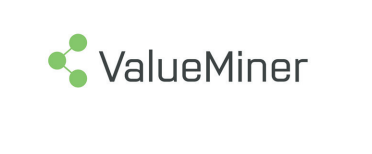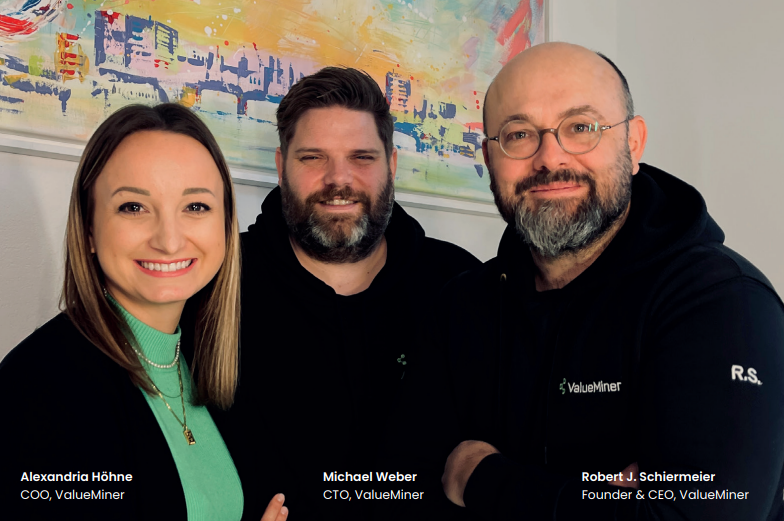In the contemporary theatre of global technology, where digital transformation has too often become a hollow phrase, one company is rebuilding the premise from its very foundations. Nestled in Munich yet thinking at planetary scale, ValueMiner is not merely a software firm. It is an architectural response to decades of management inefficiency, IT sprawl, and unmet strategic potential. Founded in 2014 by veteran C-level consultant Robert J. Schiermeier, ValueMiner fuses cutting-edge AI, sovereign data models, and a graph-first logic to craft one of the most transformative platforms in modern enterprise technology
Where most digital solutions offer layers atop legacy complexity, ValueMiner proposes something more ambitious: a new language for organisational intelligence. The result is not a tool but an operating system for the 21st-century manager.
Graph Thinking: Escaping the Tyranny of Tables
At the technological core of ValueMiner lies a bold philosophical assertion: the world is not a table, it is a graph. Whereas traditional databases force reality into rows and columns, ValueMiner’s proprietary graph database embraces the interconnected, living structure of business. From production chains to compliance workflows, from cross-border project portfolios to embedded teams, everything becomes visible, linkable, and context-rich.
This shift is not academic. It powers ValueMiner’s ability to construct a real-time digital twin of an enterprise – a living simulation that mirrors strategy, operations, and interdependencies as they unfold. For the manager, this means real questions (“How is our strategic rollout in APAC progressing?” or “Where are we losing efficiency in compliance?”) can be asked and answered without weeks of data wrangling or millions in analytics infrastructure. The digital twin does not just visualise data; it speaks it.
Complementing this is ValueMiner’s sovereign AI layer. In a European landscape increasingly sensitive to data privacy and control, the firm offers an approach that is both powerful and compliant. Combined with a sophisticated low-code interface, users can create customised, enterprise-ready applications in weeks, not quarters – and do so without abandoning legacy systems. The platform connects, rather than replaces, weaving modern functionality into old architectures without disruption.
A New Playbook
ValueMiner serves two distinct, high-impact user groups. The first is enterprise managers: individuals responsible for navigating strategy, performance, and process with limited visibility and overstretched resources. ValueMiner hands them a control panel grounded in logic, not latency. Gone are the days when strategic clarity required army-sized controlling departments.
The second audience is software companies and development teams. With ValueMiner’s low-code framework, these firms can rebuild their existing software products on top of a flexible AI backbone – achieving cost savings up to 70 percent while gaining real-time adaptability. It is, quite literally, software remade without compromise.
These are not marginal improvements. Clients routinely report IT cost reductions of 80 percent. Entire bureaucratic structures are being reimagined, as evidenced by ValueMiner’s active role in transforming how the Bavarian government interfaces with citizens. This is not just modernisation; it is structural reinvention.
The Culture Behind the Code
Yet if technology is ValueMiner’s engine, culture is its chassis. The firm runs not on jargon or hierarchy, but on a plainspoken ethos that places character above credentials. “We are not interested in your CV, but in how your brain works,” says Schiermeier. The internal motto – respect, keep your promises – is a lived operating system.
Executives such as COO Alexandra Höhne and CTO Michael Weber embody this culture: intellectually rigorous, emotionally intelligent, and radically committed to impact. Team members are expected not just to code or consult but to challenge assumptions, propose bold solutions, and learn from failure. This cultural scaffolding enables a unique blend of creativity and precision, yielding products that are not only innovative but deeply fit for purpose.
Recruitment is guided by four core traits: curiosity, collaborative drive, resilience, and problem-solving ability. These are not soft skills, but the foundation of the firm’s delivery model. It is an environment where excellence is expected, but humanity is preserved.
The Strategic Ascent
Having pioneered AI compliance software in 2016 and partnered with OpenAI in Germany as early as 2018, ValueMiner has long moved ahead of the curve. Today, it is executing industrial strategies across five continents, forming defence and civil partnerships with industry unicorns, and being considered for prestigious awards such as the Bavarian Innovation Prize.
In Germany, it is revolutionising public sector services by applying private-sector efficiency to citizen-state interactions. In Asia and the US, new strategic partnerships are extending ValueMiner’s graph-based logic to global systems. Verticals in publishing and internal compliance are in active development, and CRM partnerships across Europe are accelerating.
Through it all, ValueMiner adheres to its founding promise: digital transformation without the trauma of system replacement, and automation without the dilution of human intelligence.
To describe ValueMiner as a software firm is to miss its broader implication. It is a reframing of how enterprises think, act, and evolve. In a business environment saturated by dashboards that offer more colour than clarity, ValueMiner presents something rarer: real-time coherence.
Its impact is measured not just in money saved, but in friction removed – from workflows, decisions, and even culture. It renders the opaque legible and the complex navigable. And in doing so, it grants managers, developers, and public servants alike a rare gift in the modern age: the ability to see clearly, act precisely, and lead confidently.
ValueMiner is not just a platform. It is the architecture of organisational sensemaking – built not for code alone, but for the cadence of decision.



